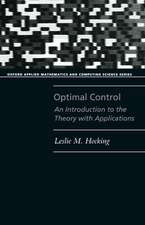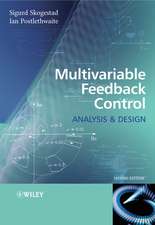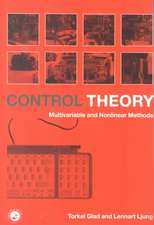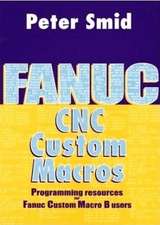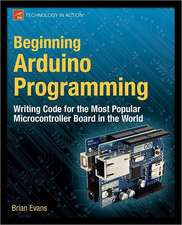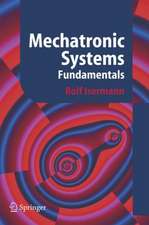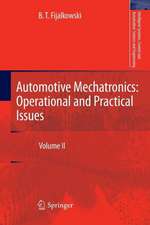Mechanism of Artificial Heart
Autor Takashi Yamaneen Limba Engleză Hardback – 13 mai 2016
| Toate formatele și edițiile | Preț | Express |
|---|---|---|
| Paperback (1) | 896.04 lei 38-44 zile | |
| Springer – 27 mai 2018 | 896.04 lei 38-44 zile | |
| Hardback (1) | 1036.28 lei 22-36 zile | |
| Springer – 13 mai 2016 | 1036.28 lei 22-36 zile |
Preț: 1036.28 lei
Preț vechi: 1090.81 lei
-5% Nou
Puncte Express: 1554
Preț estimativ în valută:
198.35€ • 215.53$ • 166.73£
198.35€ • 215.53$ • 166.73£
Carte disponibilă
Livrare economică 31 martie-14 aprilie
Preluare comenzi: 021 569.72.76
Specificații
ISBN-13: 9784431558293
ISBN-10: 4431558292
Pagini: 200
Ilustrații: X, 77 p. 59 illus., 22 illus. in color.
Dimensiuni: 155 x 235 x 11 mm
Greutate: 0.54 kg
Ediția:1st ed. 2016
Editura: Springer
Colecția Springer
Locul publicării:Tokyo, Japan
ISBN-10: 4431558292
Pagini: 200
Ilustrații: X, 77 p. 59 illus., 22 illus. in color.
Dimensiuni: 155 x 235 x 11 mm
Greutate: 0.54 kg
Ediția:1st ed. 2016
Editura: Springer
Colecția Springer
Locul publicării:Tokyo, Japan
Public țintă
ResearchCuprins
Introduction.- What kinds of artificial heart are available?.- How do we select pump types?.- Selection of bearing types: Key to durability.- Motor, battery, and magnetic suspension.- Flow visualization and computational fluid dynamic analysis.- How do we select materials?.- Enhancement of hemocompatibility.- System evaluation.- Remarks and future aspects.
Textul de pe ultima copertă
This book first describes medical devices in relation to regenerative medicine before turning to a more specific topic: artificial heart technologies. Not only the pump mechanisms but also the bearing, motor mechanisms, and materials are described, including expert information. Design methods are described to enhance hemocompatibility: main concerns are reduction of blood cell damage and protein break, as well as prevention of blood clotting. Regulatory science from R&D to clinical trials is also discussed to verify the safety and efficacy of the devices.
Caracteristici
First book to address this topic from the perspective of mechanical designers for artificial hearts Explains not only the history of how to use the artificial heart, but also the detailed mechanisms of pulsatile / nonpulsatile VADs (ventricular assist devices), which may help to advance this field in the near future Describes all the production processes for VADs Includes supplementary material: sn.pub/extras

